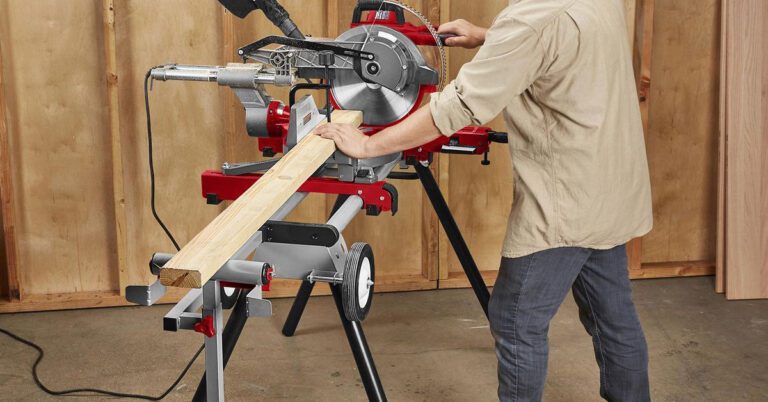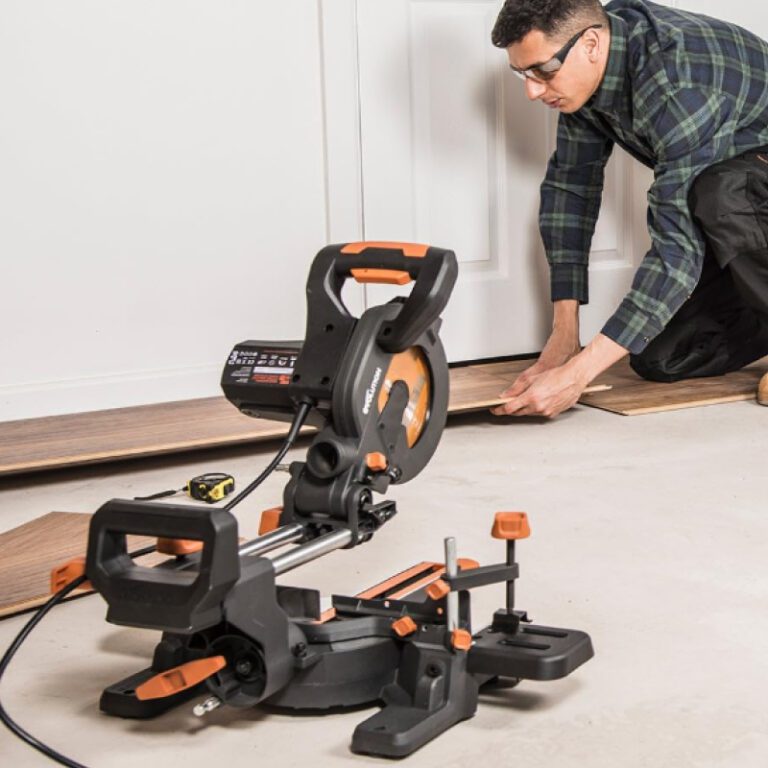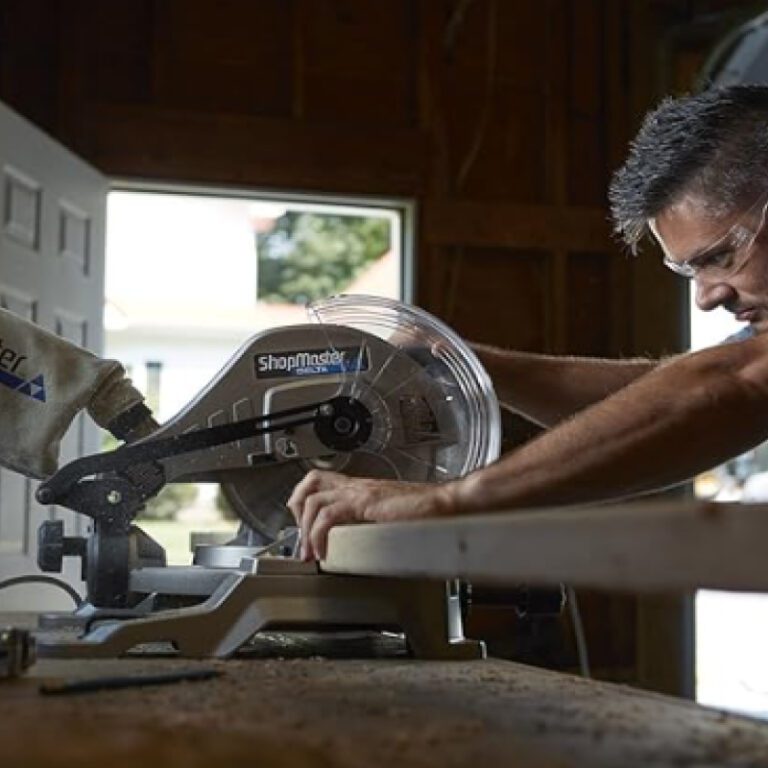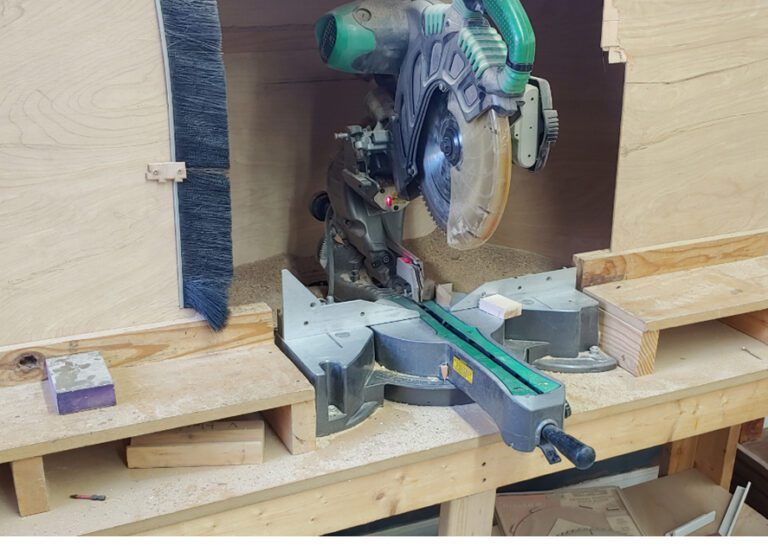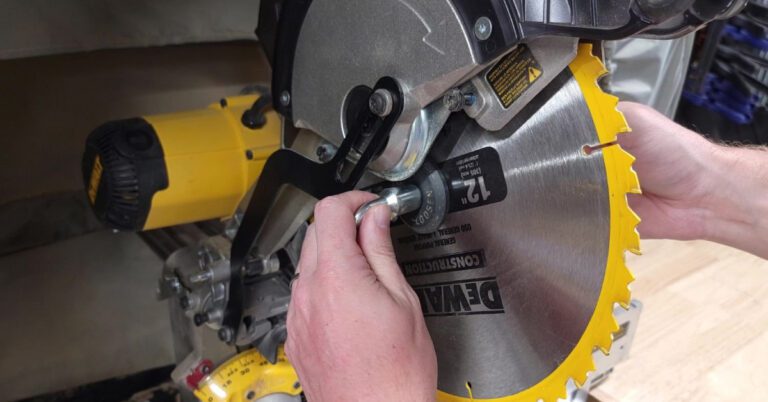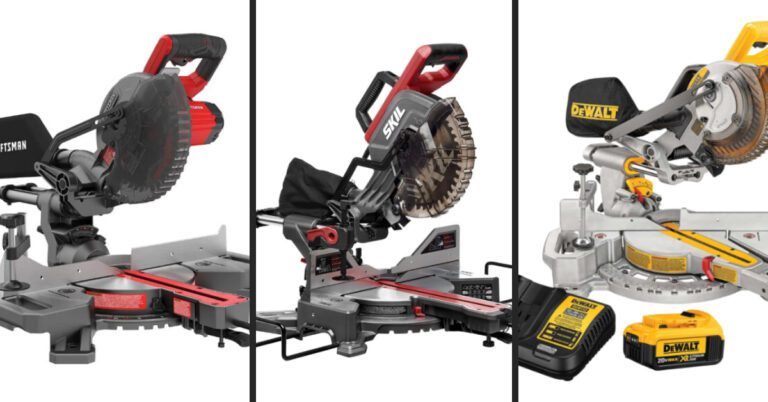Embarking on a woodworking journey often involves navigating through a plethora of tools, each with its unique significance. Among these, the miter saw stands as a cornerstone, offering precision and versatility in crafting intricate cuts and angles. In this guide, we delve into the realm of miter saws, offering a comprehensive overview of their functionality, the pivotal role they play in woodworking projects, and why selecting the right one is paramount. Whether you’re a seasoned craftsman seeking to upgrade your arsenal or a novice enthusiast stepping into the realm of woodworking, this Miter Saw Buying Guide aims to illuminate the features, explore reputable brands, and unveil budget-friendly options to aid in your decision-making process.
Understanding Miter Saws
Before delving into the nuances of purchasing a miter saw, it’s essential to grasp the fundamentals of its design and functionality. Miter saws, also known as chop saws or drop saws, are indispensable tools in woodworking, renowned for their ability to make precise cuts at various angles effortlessly. In this section, we’ll unravel the intricacies of miter saws, exploring their definition, function, types, and key components.
Definition and function
At its core, a miter saw is a specialized power tool designed to make accurate crosscuts and miter cuts in wood and other materials with exceptional precision. Its primary function revolves around swiftly and precisely cutting through workpieces at predetermined angles, ensuring clean and smooth edges. Whether you’re crafting picture frames, molding, or furniture pieces, a miter saw serves as an indispensable ally in achieving impeccable results.
Types of miter saws (standard, compound, sliding compound)
Miter saws come in various configurations to cater to different cutting needs and project requirements. The standard miter saw, often referred to as a basic or non-compound miter saw, excels at making straightforward miter cuts at fixed angles. Compound miter saws, on the other hand, offer enhanced versatility by allowing users to tilt the blade both horizontally (for bevel cuts) and vertically (for miter cuts). This added functionality enables the creation of compound angles, making them ideal for complex woodworking tasks. Sliding compound miter saws combine the capabilities of compound saws with a sliding feature that enables the blade to move forward and backward, significantly increasing the cutting capacity for wider workpieces.
Key components and terminology (blade, miter gauge, bevel, etc.)
To master the art of using a miter saw effectively, familiarizing oneself with its key components and terminology is essential. The blade, the heart of the miter saw, determines the type of cuts it can make and comes in various sizes and tooth configurations suited for different materials. The miter gauge allows for precise adjustment of the cutting angle, while the bevel adjustment controls the tilt of the blade for bevel cuts. Additionally, features like the fence, dust collection system, and laser guides contribute to the overall functionality and user experience of the miter saw. Understanding these components and their roles empowers woodworkers to unleash the full potential of their miter saws with confidence and precision.
Essential Features to Consider in our Miter Saw Buying Guide
As you embark on the journey of selecting the perfect miter saw to complement your woodworking endeavors, it’s crucial to discern the essential features that can make all the difference in your crafting experience. In this section, we’ll explore the key factors to consider when evaluating miter saw options, ensuring that your investment aligns seamlessly with your project requirements and woodworking aspirations.
Cutting Capacity
One of the foremost considerations when choosing a miter saw is its cutting capacity, which dictates the maximum size and thickness of the workpieces it can accommodate. Assessing the horizontal and vertical cutting capacities of a miter saw enables you to determine its suitability for your intended projects, whether you’re working with small trim pieces or large dimensional lumber. Opting for a miter saw with ample cutting capacity ensures versatility and efficiency in tackling a diverse range of woodworking tasks with ease and precision.
Accuracy and Precision
Woodworking is an art that demands meticulous attention to detail, and the ability to achieve precise cuts is paramount to the success of any project. When evaluating miter saw options, prioritize models renowned for their accuracy and precision. Look for features such as laser guides, shadow lines, or digital readouts that facilitate precise alignment and cutting, empowering you to execute intricate designs and achieve flawless results consistently. Additionally, sturdy fences and stable work surfaces contribute to enhanced stability and repeatability, further refining the precision of your cuts.
Power and Motor
The power and performance of a miter saw’s motor play a pivotal role in determining its cutting capabilities and overall efficiency. Opt for a model equipped with a robust motor that delivers ample horsepower to effortlessly slice through hardwoods and dense materials without bogging down or compromising on speed. Variable speed controls offer added versatility, allowing you to adapt the cutting speed to suit different materials and cutting techniques, while soft start features minimize kickback and enhance user control, particularly when initiating cuts.
Bevel and Miter Angles
Versatility is key when it comes to miter saws, and the ability to adjust both miter and bevel angles expands the scope of your woodworking possibilities. Seek out miter saws with a wide range of preset miter stops and bevel detents, enabling quick and precise adjustments to common angles commonly used in woodworking projects. Additionally, consider models with positive stops or override mechanisms that facilitate fine-tuning of angles for custom cuts, ensuring utmost accuracy and flexibility in crafting intricate designs and joinery.
Dust Collection System
Woodworking inevitably generates a substantial amount of sawdust and debris, posing not only a cleanliness concern but also potential health hazards and equipment maintenance issues. Prioritize miter saws equipped with efficient dust collection systems that effectively capture and contain debris, keeping your workspace clean and free of airborne particles. Look for models with strategically positioned dust ports, integrated vacuum attachments, or blade guards with built-in dust chutes to mitigate dust accumulation and maintain optimal visibility and operating conditions while minimizing cleanup efforts.
Portability and Weight
Whether you’re setting up shop in a dedicated woodworking studio or working on-site at various locations, the portability and weight of your miter saw can significantly impact its usability and convenience. Consider the size and weight of the miter saw, opting for lightweight and compact models that are easy to transport and maneuver, particularly if you anticipate frequent relocation or mobile woodworking ventures. Features such as ergonomic handles, collapsible stands, or integrated carrying handles enhance portability and facilitate hassle-free transportation, ensuring that your miter saw remains a reliable companion wherever your woodworking endeavors take you.
Safety Features
Safety should always remain at the forefront of any woodworking endeavor, and selecting a miter saw equipped with comprehensive safety features is non-negotiable. Prioritize models with blade guards, blade brakes, and electric brakes that swiftly halt blade rotation upon releasing the trigger, minimizing the risk of accidental contact or injury. Additionally, consider miter saws with integrated safety switches, blade guards with transparent shields, and dual-trigger operation mechanisms that promote safe handling and usage practices, empowering woodworkers to pursue their craft with confidence and peace of mind.
Factors to Consider Before Buying
Before making the investment in a miter saw, it’s essential to conduct a thorough assessment of your workspace, project requirements, and personal preferences to ensure that your chosen model aligns seamlessly with your woodworking aspirations. In this section, we’ll delve into the critical factors to consider before committing to a purchase, empowering you to make an informed decision that lays the foundation for successful woodworking ventures.
Workspace and Project Requirements
The layout and dimensions of your workspace, along with the nature of your woodworking projects, exert a significant influence on the type of miter saw that best suits your needs. Evaluate the available space in your workshop or garage, considering factors such as clearance for material handling and adequate ventilation for dust collection systems. Additionally, assess the scale and complexity of your typical woodworking projects, identifying the cutting capacity and versatility required to accommodate various materials, dimensions, and angles effectively. By aligning the capabilities of your miter saw with your workspace and project requirements, you can optimize efficiency and workflow, fostering a conducive environment for creativity and craftsmanship.
User Experience and Skill Level
Woodworking encompasses a spectrum of skill levels and expertise, ranging from novice enthusiasts to seasoned professionals, each with distinct preferences and priorities. Consider your level of experience and familiarity with power tools when selecting a miter saw, opting for user-friendly models with intuitive controls and safety features conducive to your skill level. Novices may benefit from miter saws equipped with guided cutting systems, while experienced woodworkers might prioritize advanced features and customization options to accommodate their specialized techniques and preferences. Additionally, factor in ergonomic design elements and comfort features that enhance user experience, minimizing fatigue and promoting precision during prolonged woodworking sessions.
Longevity and Durability
Investing in a quality miter saw is akin to planting the seeds for long-term woodworking success, and durability plays a pivotal role in ensuring the longevity of your investment. Assess the construction and materials of prospective miter saw models, prioritizing sturdy frameworks and durable components capable of withstanding rigorous use and environmental conditions. Look for reputable brands known for their commitment to quality craftsmanship and reliability, backed by warranties and customer support that instill confidence in your purchase. By prioritizing longevity and durability, you not only safeguard your investment but also lay the groundwork for a dependable woodworking companion that stands the test of time.
Future Expansion and Compatibility
As your woodworking skills evolve and your repertoire of projects expands, your miter saw should be able to grow and adapt alongside your aspirations. Consider the compatibility of your chosen miter saw with accessories, attachments, and upgrade options that facilitate future expansion and customization. Look for versatile models that support the integration of supplementary features such as extension tables, auxiliary fences, or specialized blades tailored to specific applications. Additionally, evaluate the compatibility of your miter saw with existing tools and equipment in your workshop, ensuring seamless integration and interoperability that streamline workflow and enhance productivity. By planning for future expansion and compatibility, you lay the groundwork for a dynamic woodworking setup that evolves in tandem with your creative journey.
Final Thoughts on our Miter Saw Buying Guide
In conclusion, navigating the realm of miter saws entails understanding essential features, evaluating critical factors, and making informed decisions that align with your woodworking aspirations. Throughout this guide, we’ve explored the fundamental aspects of miter saws, from their definition and functionality to crucial factors to consider before purchasing. We emphasized the importance of assessing cutting capacity, accuracy, power, and safety features, ensuring that your chosen miter saw meets both your current project requirements and future woodworking endeavors.
Choosing the right miter saw is not merely about acquiring a tool but rather investing in a reliable companion that empowers you to unleash your creativity and craftsmanship with confidence. By prioritizing precision, durability, and compatibility, you lay the foundation for a fulfilling woodworking journey characterized by innovation, mastery, and boundless creativity. Embrace the journey of woodworking with enthusiasm and curiosity, and may your pursuit of excellence be guided by informed decision-making and unwavering passion for the craft.

